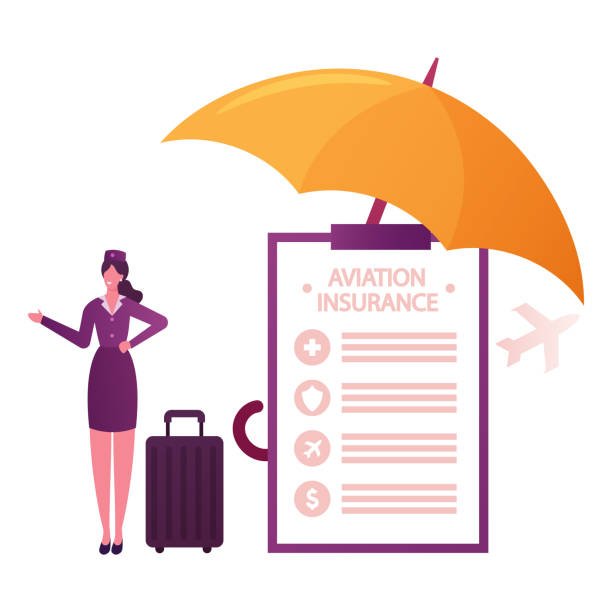Introduction
Traveling is one of life’s greatest joys, allowing us to explore new places, experience different cultures, and create lasting memories. Whether you’re embarking on a solo adventure, a family vacation, or a business trip, travel is an opportunity for growth and enrichment. However, amidst all the excitement and anticipation, it’s crucial to consider the unexpected challenges that can arise during your journey.
This is where traveler’s insurance comes into play. In this comprehensive guide, we will delve into the world of traveler’s insurance, covering everything you need to know to make informed decisions about your coverage. From understanding the basics to exploring different types of policies and providing tips for choosing the right one, we’ll equip you with the knowledge to safeguard your travel experiences.

Chapter 1: The Basics of Traveler’s Insurance
Before we dive into the nuances of traveler’s insurance, let’s start with the fundamentals.
1.1 What is Traveler’s Insurance? Traveler’s insurance, often referred to as travel insurance, is a type of insurance policy designed to protect travelers from various unforeseen events and expenses that can occur before or during their trip. It provides financial assistance and peace of mind in situations such as trip cancellations, medical emergencies, lost luggage, and more.
1.2 Why Do You Need Traveler’s Insurance? Traveler’s insurance serves as a safety net, offering protection against unexpected situations that can disrupt your travel plans and incur substantial costs. Some of the key reasons to consider traveler’s insurance include:
- Trip Cancellation: Covers non-refundable trip expenses if you need to cancel your trip due to a covered reason (e.g., illness, death in the family).
- Medical Emergencies: Provides coverage for medical expenses, including hospital stays and emergency medical evacuation.
- Lost or Delayed Luggage: Reimburses you for lost, stolen, or delayed baggage.
- Trip Interruption: Offers compensation for expenses incurred if your trip is cut short due to covered reasons.
- Travel Delays: Provides compensation for additional expenses caused by flight delays or cancellations.
- Travel Assistance: Offers 24/7 support for emergencies while traveling, including translation services and legal assistance.
Chapter 2: Types of Traveler’s Insurance
Not all traveler’s insurance policies are created equal. Understanding the different types of coverage options will help you select the one that best suits your needs.
2.1 Single Trip Insurance Single trip insurance covers a specific journey, from the moment you leave home until you return. It is ideal for occasional travelers who embark on one or two trips a year.
2.2 Annual Multi-Trip Insurance Annual multi-trip insurance, also known as yearly or frequent traveler insurance, provides coverage for an unlimited number of trips within a 12-month period. It is cost-effective for frequent travelers and often includes additional benefits.
2.3 Specialty Travel Insurance Specialty travel insurance policies cater to specific needs. Some examples include:
- Adventure Travel Insurance: Designed for thrill-seekers engaging in activities like hiking, skiing, or scuba diving.
- Business Travel Insurance: Tailored to the needs of business travelers, covering work-related expenses and emergencies.
- Cruise Travel Insurance: Specifically crafted for cruise vacations, addressing unique cruise-related risks.
2.4 Group Travel Insurance Group travel insurance covers multiple individuals traveling together, such as families or tour groups. It can be more affordable and convenient to purchase a single policy for the group.
Chapter 3: What Does Traveler’s Insurance Cover?
Now that we’ve explored the different types of traveler’s insurance, let’s delve into the specific areas of coverage provided by these policies.
3.1 Trip Cancellation and Interruption Trip cancellation and interruption coverage are among the most crucial components of traveler’s insurance. These policies typically cover:
- Non-refundable trip expenses due to covered reasons like illness, injury, or death.
- Additional expenses incurred if your trip is disrupted or cut short.
3.2 Medical Expenses and Emergency Medical Evacuation Medical coverage is vital, especially when traveling abroad. Traveler’s insurance can include:
- Reimbursement for medical expenses incurred due to illness or injury during your trip.
- Emergency medical evacuation to transport you to the nearest adequate medical facility.
3.3 Lost or Delayed Luggage This coverage reimburses you for:
- Lost, stolen, or damaged baggage.
- Expenses for essential items if your luggage is delayed.
3.4 Travel Delay and Missed Connections Traveler’s insurance can help cover:
- Additional expenses due to flight delays.
- Costs related to missed connections or accommodations.
3.5 Accidental Death and Dismemberment In the unfortunate event of a fatal accident during your trip, this coverage provides a benefit to your beneficiaries.
3.6 Cancel for Any Reason (CFAR) CFAR is an optional add-on that allows you to cancel your trip for any reason not covered by standard policies. It offers maximum flexibility but often comes at a higher cost.
Chapter 4: How to Choose the Right Traveler’s Insurance
Selecting the right traveler’s insurance policy requires careful consideration of your unique needs and preferences.
4.1 Assess Your Travel Needs Start by evaluating your trip details, including destination, duration, and planned activities. Consider factors like your health, age, and the value of non-refundable trip expenses.
4.2 Compare Policies Research and compare policies from multiple insurance providers. Look for coverage limits, exclusions, deductibles, and premiums that align with your requirements.
4.3 Read Reviews and Seek Recommendations Reading reviews from fellow travelers and seeking recommendations from friends or travel forums can help you identify reputable insurance companies.
4.4 Understand Exclusions Pay close attention to policy exclusions and limitations. Be aware of any pre-existing medical conditions that may affect coverage.
4.5 Consider Add-Ons Explore optional add-ons, such as CFAR coverage or adventure sports coverage, to tailor your policy to your specific needs.
4.6 Check Travel Advisories Stay informed about travel advisories and COVID-19-related restrictions in your destination. Some policies may provide coverage for pandemic-related issues.

Chapter 5: Tips for Making a Claim
In the event of an unexpected incident during your trip, knowing how to file a claim is crucial. Here are some tips to help you navigate the claims process:
5.1 Keep Detailed Records Document everything, including medical bills, police reports, and receipts for expenses incurred due to covered events.
5.2 Notify Your Insurer Promptly Inform your insurance provider as soon as possible if an incident occurs. Delaying the notification could affect your claim.
5.3 Follow Instructions Carefully Adhere to the claims submission process outlined by your insurer. Provide all necessary documentation and information.
5.4 Maintain Open Communication Stay in touch with your insurer throughout the claims process, asking questions and seeking clarification if needed
Conclusion
Traveler’s insurance is a vital companion for anyone embarking on a journey, offering protection and peace of mind when the unexpected happens. By understanding the basics, exploring the various types of coverage, and following our tips for choosing the right policy, you can ensure that your travel adventures are both enjoyable and secure.
So, the next time you’re packing your bags and planning your trip, remember that traveler’s insurance is your ticket to a worry-free and memorable experience.

